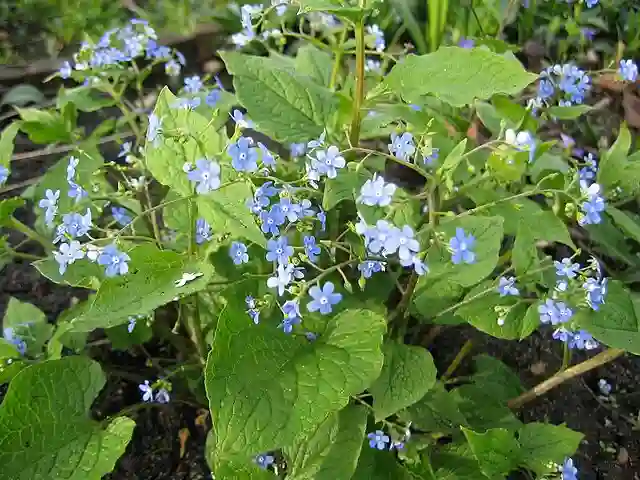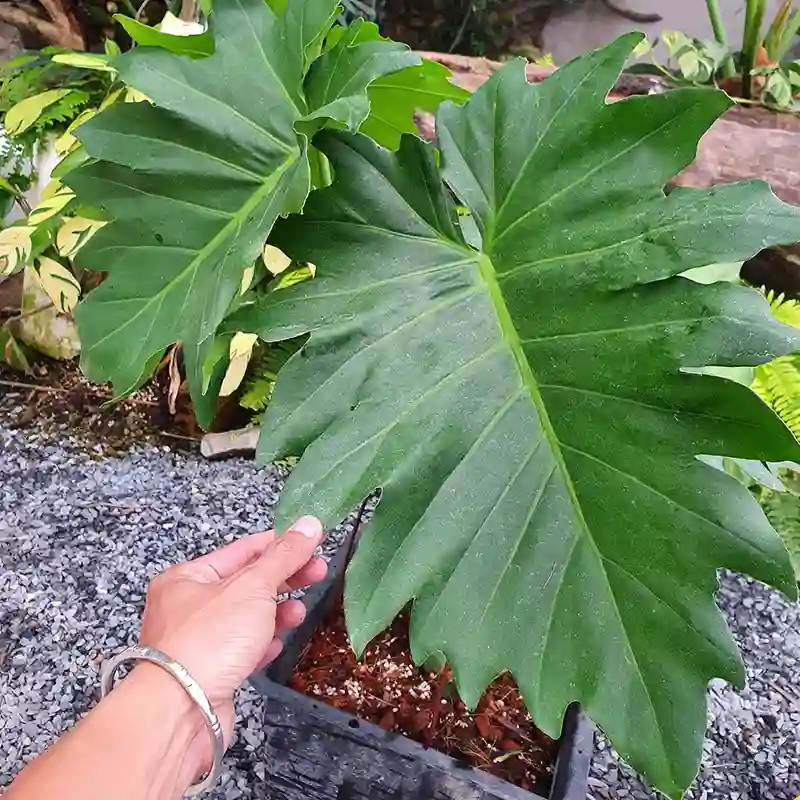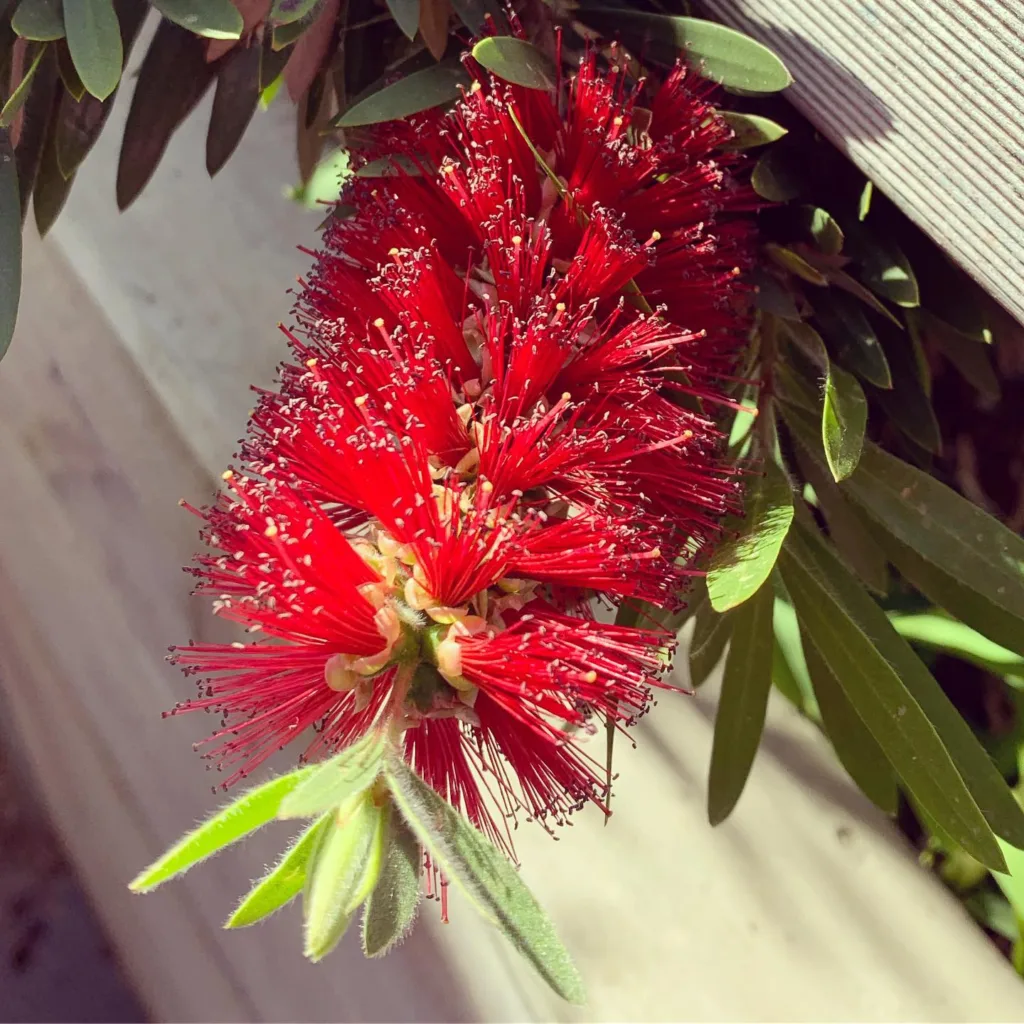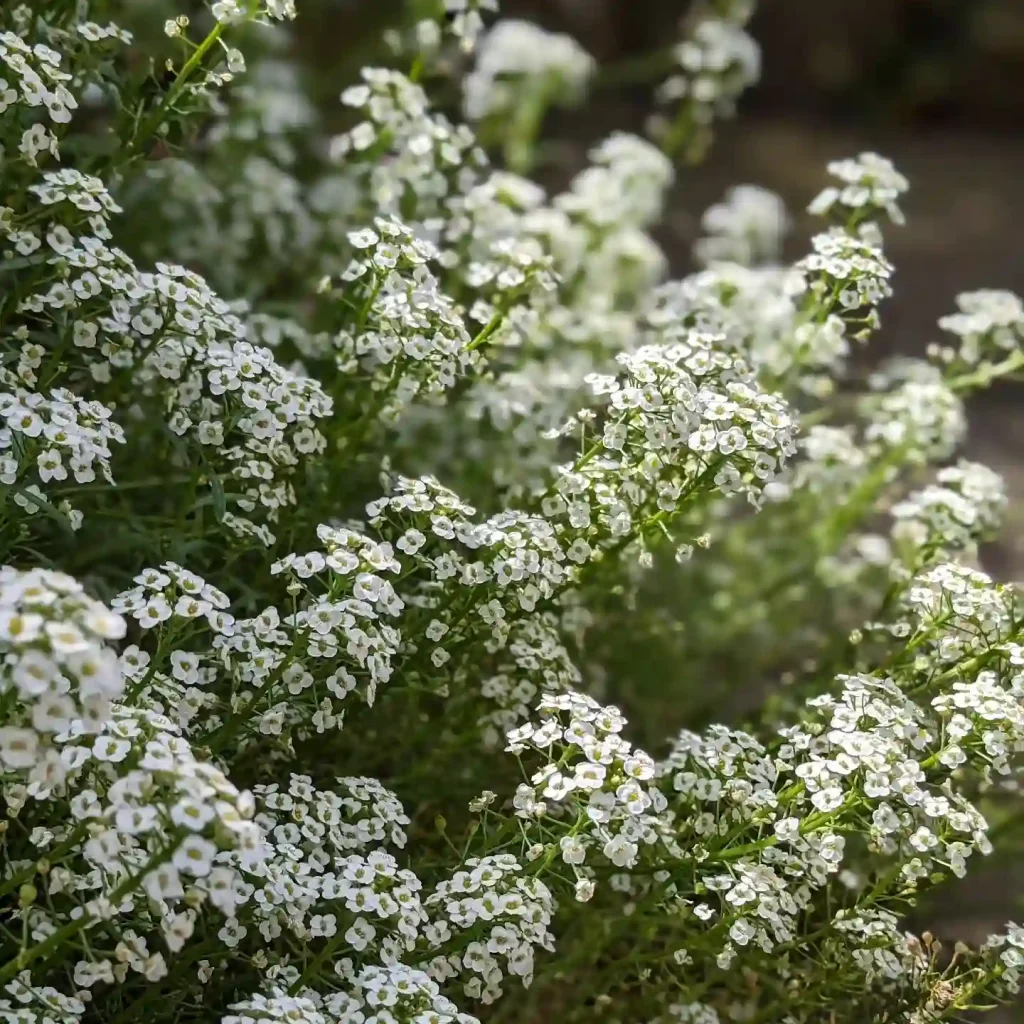
1. Introduction to Philodendron Black Cardinal: The Enigmatic Dark Beauty
1.1. What is Philodendron erubescens ‘Black Cardinal’?
The Philodendron erubescens ‘Black Cardinal’ is a stunning and widely popular hybrid cultivar within the Philodendron genus. It is particularly distinguished by its impressive size, robust nature, and captivatingly dark coloration: its large, glossy leaves unfurl in striking shades of deep chocolate, reddish-black, or bronze, gradually transitioning to an intense, almost blackish-green as they mature. This dramatic chromatic display, combined with its broad, oval-shaped leaves and self-heading growth habit, makes it a true collector’s dream and a bold, elegant focal point in any indoor plant collection. It forms a dense, upright clump, offering a lush and dark statement without requiring climbing support.
1.2. Reasons for its Appeal
Philodendron ‘Black Cardinal’ captivates plant enthusiasts for several compelling reasons:
- Dramatic Dark Coloration: Its very dark new growth and mature almost blackish-green leaves provide a dramatic and sophisticated aesthetic, appealing to “goth gardening” trends.
- Large and Impressive Foliage: Its substantial, glossy, broad, and oval leaves create a strong visual impact.
- Upright, Bushy Growth: Its self-heading nature means it forms a large, impressive clump without needing a moss pole, making it a low-maintenance option for a big statement plant.
- Robust and Adaptable: It is known for its hardiness and adaptability to typical indoor conditions, making it a suitable choice for both beginners and experienced growers.
2. Origins and Distinguishing Characteristics
2.1. Origins
Philodendron erubescens is a species native to the tropical rainforests of Colombia. Philodendron ‘Black Cardinal’ is a cultivated hybrid or cultivar derived from this species, specifically bred to enhance its dark, almost blackish coloration. As a cultivated variety, it does not have a distinct wild origin like a species, but its lineage traces back to these humid, warm environments.
2.2. Leaf Morphology and Color Progression
The leaves of Philodendron ‘Black Cardinal’ are typically large, broad, and oval-shaped, possessing a thick, leathery, and very glossy texture. The most defining characteristic is its unique color progression:
- New Growth: Unfurls in striking shades of deep chocolate, reddish-black, or bronze. The petioles (leaf stems) can also exhibit dark or reddish tints.
- Mature Growth: Gradually transitions to an intense, almost blackish-green as the leaves fully expand and harden off. This deep color is maintained, often with a subtle metallic sheen. The leaves are entire (not deeply lobed or fenestrated) and contribute to its lush, full appearance.
2.3. Growth Habit and Rate
Philodendron ‘Black Cardinal’ is a self-heading Philodendron, meaning it grows upright from a central base and forms a compact, bushy clump. Unlike vining Philodendrons, it does not typically produce long, trailing stems or require a moss pole for support. It is often described as low-growing and shrubby. While it can attach to a totem over time, its natural tendency is to form an upright bush. It exhibits a slow to moderate growth rate under optimal conditions, gradually filling out its space to become a substantial floor plant. It typically grows from 2-3 feet in height.
2.4. Toxicity
Like most other Philodendron species, Philodendron erubescens ‘Black Cardinal’ is considered toxic to pets (cats, dogs) and humans if ingested. It contains calcium oxalate crystals, which can cause irritation and swelling of the mouth, throat, and digestive tract, leading to discomfort, vomiting, and difficulty swallowing. It is advisable to keep this plant out of reach of pets and small children. People may also experience skin irritation from its juices.
2.5. Comparison to Similar Philodendrons (Imperial Red, Red Congo, Dark Lord, Black Knight)
Philodendron ‘Black Cardinal’ is a very popular choice, and it’s often compared to other large Philodendrons with dark or reddish new growth, especially other self-heading types.
- Philodendron erubescens ‘Black Cardinal’: Characterized by large, glossy, broad, oval leaves that unfurl in deep chocolate/reddish-black/bronze and mature to an almost blackish-green. It is a self-heading (non-vining) Philodendron, forming a robust, upright clump. It is generally slower growing and has shorter, smaller leaves than ‘Black Knight’.
- Philodendron ‘Imperial Red’: Very similar in overall appearance to ‘Black Cardinal’ in terms of self-heading habit and dark new growth. Its new leaves unfurl in vibrant red tones. Some sources suggest ‘Black Cardinal’ produces smaller, shorter leaves and develops rich chocolate colored leaves instead of the more scarlet/reddish tones of ‘Imperial Red’. For practical purposes, they are often used interchangeably by hobbyists due to their close resemblance.
- Philodendron ‘Red Congo’: Also a self-heading hybrid with large, glossy, entire leaves that unfurl reddish-bronze or coppery-red and mature to deep green, with prominent red stems. Its new growth tends to be more reddish-bronze compared to the deeper, almost black tones of ‘Black Cardinal’.
- Philodendron ‘Dark Lord’: Has large, arrow-shaped, glossy leaves that unfurl in reddish-bronze to almost black hues, maturing to deep green. Crucially, ‘Dark Lord’ is a climbing Philodendron, requiring a moss pole, unlike the self-heading ‘Black Cardinal’.
- Philodendron ‘Black Knight’: Very similar to ‘Black Cardinal’ in overall dark appearance. However, ‘Black Knight’ is typically a climbing Philodendron, has leaves that are often more pointer and more heart-shaped, and grows faster. Identifying juvenile forms of ‘Black Knight’ and ‘Black Cardinal’ can be very challenging.
The primary distinguishing features of ‘Black Cardinal’ are its bold, self-heading growth habit, and its substantial, uniformly large, glossy, broad, oval leaves with a distinct very dark, almost black, color progression.
3. Comprehensive Care Guide: Nurturing Your Black Cardinal
Cultivating a thriving Philodendron ‘Black Cardinal’ involves providing consistent care that closely mimics its tropical origins, ensuring its lush growth and vibrant coloration.
Table 1: Quick Care Guide for Philodendron Black Cardinal
| Care Factor | Requirement Description |
|---|---|
| Light | Bright, indirect light (e.g., East-facing window, filtered South/West). Avoid direct harsh sun. |
| Temperature | Ideal range: 18-27°C (65-80°F). Protect from cold drafts (below 18°C/65°F). |
| Humidity | Moderate to high (50% or above) is beneficial. Tolerates average household humidity. |
| Watering | Water when top 1-2 inches of soil is dry. Allow partial drying. Ensure good drainage. Avoid overwatering. |
| Soil | Well-draining, airy, rich, organic mix (aroid mix, or potting soil + perlite + orchid bark). pH 5.5-6.5 (acidic to mildly acidic). |
| Fertilization | Balanced liquid fertilizer, diluted, monthly or bi-monthly in spring/summer. Withhold in fall/winter. |
| Pruning | Trim yellowing/dead leaves, prune for shape/density. |
| Repotting | Every 2-3 years, or when root-bound, in spring. Increase pot size slightly. |
| Support | Optional: stakes if top-heavy. Not typically a climber. |
3.1. Light Requirements
Philodendron ‘Black Cardinal’ thrives in bright, indirect light. This is crucial for it to develop and maintain its intense dark coloration in new growth. Place your plant near an east or north-facing window for ample indirect light. If placed beside a window that gets direct morning sun, that is often fine, but if it is exposed to intense afternoon sun, those beautiful leaves can get scorched. For south or west-facing windows, use sheer curtains to filter the light and avoid direct sun exposure. Direct, harsh sunlight can easily scorch its glossy leaves, leading to irreversible brown spots and dulling its dramatic dark colors (leaves may become pale and brown instead of glossy bronze and blackish-green). Conversely, insufficient light (low light levels) can lead to slower growth, smaller leaves, and less vibrant foliage, with new leaves appearing less dark. To promote even growth, rotate your plant every couple of weeks.
3.2. Temperature and Humidity
As a plant originating from tropical rainforest native species, Philodendron ‘Black Cardinal’ prefers consistently warm temperatures, ideally ranging from 18-27°C (65-80°F). It’s crucial to protect it from cold drafts, extremely fluctuating temperatures, or drafty locations, as temperatures below 18°C (65°F) can stress the plant, slow growth, and cause leaf damage. Avoid placing the plant near heating vents or AC units, as extreme temperatures damage them. It generally does best in a spot where temperatures remain above 65°F.
Moderate to high humidity (50% or above, ideally 60% or higher) is beneficial for Philodendron ‘Black Cardinal’. While it copes with lower average home humidity levels (40-50%), optimal growth and pristine leaf appearance are achieved with higher moisture levels. Signs of insufficient humidity might include crispy brown leaf edges or tips. You can increase humidity by using a room humidifier, placing the pot on a pebble tray filled with water (ensuring the pot itself doesn’t sit in the water), or grouping the plant with other humidity-loving plants to create a humid microclimate. Regular misting can also provide a temporary boost.
3.3. Watering Practices
Proper watering is critical for Philodendron ‘Black Cardinal’. It prefers its soil to be consistently moist but not soggy, allowing the top layer to dry out partially between waterings to prevent root rot. Water thoroughly when the top 1-2 inches (2.5-5 cm) of the soil feels dry to the touch. Slowly pour tepid water over the entire soil surface to ensure even absorption. Ensure that the pot has excellent drainage holes and that any excess water drains out completely from the bottom. Never allow the plant to sit in standing water, as this is the primary cause of root rot. Overwatering is a common mistake and a major problem to watch for. While they handle low moisture better than some philodendron species, black cardinals are still not drought-tolerant plants.
The frequency of watering will depend on environmental factors like light, temperature, and humidity, as well as the pot size and soil mix. Expect to water more often during the warmer, active growing months (spring and summer), typically weekly or every 1 to 2 weeks. During the cooler, dormant months of fall and winter, reduce watering frequency significantly, allowing the soil to dry out more thoroughly (e.g., up to halfway dry). Drooping leaves can indicate both underwatering (plant needs water) and overwatering (due to root damage). If leaves turn yellow due to overwatering, skip a week or two of watering.
3.4. Optimal Soil Mix and Repotting
A well-draining, airy, and nutrient-rich potting mix is essential for Philodendron ‘Black Cardinal’. This mimics the loose, organic matter it would find in its native environment. An ideal mix should promote good aeration while retaining sufficient moisture. A suitable blend, often referred to as an “aroid mix,” can include:
- High-quality indoor potting soil (e.g., equal parts nutrient-dense, all-purpose potting soil)
- Coarse perlite or pumice (e.g., equal parts) for excellent drainage and aeration
- Orchid bark (e.g., equal parts) for chunkiness and improved air circulation
- Horticultural charcoal (optional, ½ part) to help absorb impurities
- Worm castings (optional, ½ part) for added organic matter and nutrients
The ideal soil pH is slightly acidic to mildly acidic, ranging from 5.5 to 6.5.
Repotting: Repot your Philodendron ‘Black Cardinal’ typically every 2-3 years, or when you notice it has become root-bound (roots growing out of drainage holes, roots crowding the top of the soil, or stunted growth). Spring is the best time to repot. Choose a new pot that is only slightly larger than the previous one (e.g., one pot size up), as too much soil can hinder its progress. A glazed or plastic pot can help keep soil moisture constant, but ensure it has good drainage holes. Always replace the potting soil to prevent the build-up of pathogens.
3.5. Fertilization Strategies
Philodendron ‘Black Cardinal’ is not a heavy feeder, but it benefits from regular fertilization during its active growing season (spring and summer) to support the growth of big, beautiful leaves.
- Frequency: Fertilize monthly or every other month (e.g., every 4-6 weeks).
- Type & Dilution: Use a balanced liquid fertilizer (e.g., 20-20-20 N-P-K) diluted to half the recommended strength. A fertilizer with a slightly higher nitrogen value (e.g., 3-2-1 or 5-2-3) can also be ideal to promote foliage growth.
- Dormancy: Reduce or completely stop fertilizing during the fall and winter months when the plant’s growth naturally slows. Do not fertilize in winter when most plants don’t require food.
- Application: Always water the plant thoroughly before applying fertilizer to protect the roots from burn. Apply fertilizer cautiously and at least 15 cm away from the plant’s base.
3.6. Pruning and Maintenance
Regular pruning is beneficial for Philodendron ‘Black Cardinal’ to maintain its desired shape and remove any unhealthy foliage.
- Pruning: Trim away any yellowing or dead leaves to maintain its appearance and health using clean, sharp scissors or pruning shears. Since it is a self-heading Philodendron, it generally will not need to be trimmed back to maintain its size, unless you want to propagate it or control its specific shape. Pruning can be done during the growing season.
- Cleaning Leaves: Regularly wipe the leaves down with a damp cloth to remove dust. This allows for maximum light absorption and photosynthesis to occur, and also helps in keeping an eye out for pests.
- Support: Since it is a self-heading Philodendron, it does not typically need to be trimmed back to maintain its size and shouldn’t grow larger than 3 feet tall. It is generally shrubby and does not vine or climb, though it will attach to a totem given enough time. Providing stakes can be beneficial if the plant becomes top-heavy.
4. Propagation Techniques: Expanding Your Collection
Propagating Philodendron ‘Black Cardinal’ is possible, primarily through stem cuttings. The best time for propagation is during the spring or early summer when the plant is actively growing.
4.1. Stem Cuttings
- Select a Healthy Stem: Choose a healthy, mature stem section that has at least one node (the bump on the stem where a leaf emerges from the stem) and preferably one or two healthy leaves.
- Sterilize Tools: Always use clean, sharp, and sterilized pruning shears or a knife to make your cuts. This prevents the spread of diseases.
- Make the Cut: Cut the stem just below a node. Remove any lower leaves that would be submerged in your chosen rooting medium to prevent rot.
- Rooting Hormone (Optional): Applying a rooting hormone (powder or gel) to the cut end can stimulate faster and more robust root development.
- Rooting Medium Options:
- Water Propagation: Place the cutting in a clear jar with fresh water, ensuring the node is fully submerged. Change the water every few days to keep it clean and prevent bacterial growth. Roots typically begin to form within a few weeks.
- Sphagnum Moss: Plant the cutting in moist, but not soggy, sphagnum moss. This medium provides excellent aeration and moisture retention, often leading to robust root development.
- Soil: You can also plant the cutting directly into a small pot filled with a well-draining, airy potting mix suitable for aroids. Keep the soil consistently moist but not soggy. Baby pots tend to dry faster, so stay on top of watering.
- Provide Optimal Environment: Place your cuttings in a warm location that receives bright, indirect light. High humidity (e.g., within a propagation box or covered with a clear plastic bag to create a mini-greenhouse effect) will significantly accelerate the rooting process.
- Potting Up: Once the roots are a few inches long (for water or moss propagation), or significant new leaf growth is visible (for soil propagation), your new plant is ready to be transitioned to a larger pot with its permanent potting mix. Philodendrons are good with roots and usually can be replanted to a bigger pot almost immediately.
5. Troubleshooting Common Issues: Pests, Diseases, and Environmental Stress
While generally robust and easy to maintain, Philodendron ‘Black Cardinal’ can encounter a few common problems if its specific care requirements are not met. Prompt identification and action are crucial for maintaining its health.
Table 2: Common Problems & Troubleshooting for Philodendron Black Cardinal
| Problem | Symptoms | Solutions/Treatment |
|---|---|---|
| Yellowing Leaves | Older, lower leaves turning yellow. | Overwatering (most common), underwatering, insufficient light, nutrient deficiency, natural aging. Adjust watering, fertilize, check roots for rot. |
| Brown/Pale Leaves | Leaves browning or becoming pale instead of glossy bronze/blackish-green. | Too much light, too little humidity, too little soil moisture. Adjust light, increase humidity, adjust watering. |
| Drooping Leaves/Limpness | Leaves losing turgor, looking limp. | Underwatering (most common), severe overwatering (root rot), cold shock. Check soil moisture, inspect roots, ensure warmth. |
| Stunted Growth/Smaller Leaves | Slow growth, new leaves are smaller than typical. | Insufficient light, nutrient deficiency, root-bound. Provide brighter light, fertilize, repot. |
| Pest Infestations | Visible pests (mealybugs, spider mites), sticky residue, distorted growth. | Isolate plant, treat with insecticidal soap, neem oil, or appropriate pesticides. |
| Root Rot | Mushy stem base, black/brown, foul-smelling roots, yellowing/wilting. | Overwatering, poor drainage. Repot, trim rotten roots, improve drainage, reduce watering. |
| Fungal Diseases | Various spots on leaves, especially if overwatered/poor air circulation. | Ensure proper watering and ventilation, avoid soaking leaves when watering. |
| Leaves Losing Dark Color | Leaves turn more dark green instead of dark burgundy/black. | Can occur in very high light conditions (e.g., full sun on a south-facing balcony). Adjust light to less extreme. |
5.1. Watering Issues
- Overwatering: This is the most common cause of problems and the main problem to watch for. Symptoms include yellowing leaves (particularly older, lower ones), lots of water dripping from the leaves (guttation), a mushy stem near the soil line, and a foul, moldy smell from the soil. This eventually leads to root rot.
- Solution: Allow the top 1-2 inches (2.5-5 cm) of soil to dry out completely between waterings. Ensure the pot has excellent drainage. If root rot is suspected, unpot the plant, trim any rotted, mushy roots, and repot in fresh, well-draining soil. Reduce watering frequency. If leaves are yellowing due to overwatering, skip a week or two of watering.
- Underwatering: While it handles low moisture better than some philodendron species, it’s not drought-tolerant. Symptoms include drooping or limp leaves, crispy brown edges or tips, and overall dull foliage.
- Solution: Increase watering frequency. Ensure you are watering thoroughly so that water drains from the bottom of the pot, indicating the entire root ball has been moistened.
5.2. Light Issues
- Insufficient Light: Can lead to slower growth, smaller leaves, and less vibrant foliage, with new leaves appearing predominantly green rather than dark. The plant will still grow, but faster with brighter light.
- Solution: Move the plant to a location that receives bright, indirect light (e.g., 3-6 feet away from a bright window). Consider supplementing with a grow light if natural light levels are consistently low.
- Too Much Direct Light: Harsh direct sun, especially during midday, can scorch its beautiful leaves. Symptoms include brown, crispy patches or a faded appearance, with leaves becoming pale and brown instead of their glossy bronze and blackish-green. In very high light, leaves may turn more dark green instead of a dark burgundy color.
- Solution: Relocate the plant to a spot with bright, indirect light, avoiding full sun. Use sheer curtains to filter intense sunlight. Rotate your plant every couple of weeks.
5.3. Humidity and Temperature Stress
- Low Humidity: Can cause the leaves to become pale and brown instead of their glossy dark color.
- Solution: While it copes with average household humidity (40-50%), it appreciates higher humidity levels (over 60% ideal). Increase ambient humidity using a humidifier, placing the pot on a pebble tray filled with water, or grouping plants together. Regular misting can also provide a temporary boost.
- Cold Stress:Philodendron ‘Black Cardinal’ does not like cold, extremely fluctuating temperatures, or drafty locations. It cannot survive in freezing temperatures.
- Solution: Ensure the plant is in a warm spot where temperatures remain above 18°C (65°F), ideally 18-27°C (65-80°F) during the day and around 15°C (60°F) at night. Protect it from cold drafts, and avoid placing it near heating vents or AC.
5.4. Pests
Philodendron ‘Black Cardinal’ is generally resistant to pests, but common houseplant pests like mealybugs and spider mites can occur. With its bushy nature, there can be many cracks and crevices where mites could easily hide.
- Symptoms: Visible insects (mealybugs with white, cottony masses; spider mites with fine webbing), sticky residue (honeydew), or speckled, distorted leaves.
- Solution: Regularly inspect your plant, especially the undersides of leaves and inside the dense foliage where new growth emerges. Isolate infested plants immediately. Treat with appropriate organic pest control methods such as insecticidal soap or neem oil. Good air circulation also helps prevent pests.
5.5. Diseases
- Root Rot: This is the most common disease, almost always a result of overwatering and poorly draining soil.
- Symptoms: Yellowing, wilting leaves (even when the soil is wet), a mushy stem near the soil line, and black/brown, foul-smelling roots.
- Solution: Immediately remove the plant from its pot. Carefully inspect the roots and prune away all affected (mushy, black) sections with sterilized shears. Repot the plant in fresh, well-draining soil with good aeration, and adjust your watering schedule to allow the soil to dry adequately between waterings.
- Fungal Diseases: Can be promoted by soaking the leaves when watering.
- Solution: Avoid soaking the leaves when watering. Ensure good air circulation around the plant. Remove any affected leaves.
6. Conclusion: Enjoying Your Thriving Philodendron Black Cardinal
Philodendron erubescens ‘Black Cardinal’, with its impressive dark new growth and robust, upright form, is a truly captivating and rewarding plant to cultivate. By consistently providing it with bright, indirect light, appropriate watering, moderate to high humidity, stable warm temperatures, and a well-draining, airy soil mix, you can ensure your ‘Black Cardinal’ thrives. While it demands attention to its specific needs, the reward of nurturing its unique beauty and watching its bold, dark leaves unfold will bring immense satisfaction and a distinctive, regal flair to your indoor space.
If i die, water my plants!



